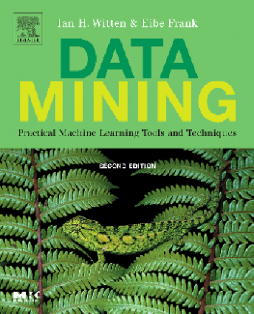
Additional Information
Book Details
Abstract
Data Mining, Second Edition, describes data mining techniques and shows how they work. The book is a major revision of the first edition that appeared in 1999. While the basic core remains the same, it has been updated to reflect the changes that have taken place over five years, and now has nearly double the references.
The highlights of this new edition include thirty new technique sections; an enhanced Weka machine learning workbench, which now features an interactive interface; comprehensive information on neural networks; a new section on Bayesian networks; and much more.
This text is designed for information systems practitioners, programmers, consultants, developers, information technology managers, specification writers as well as professors and students of graduate-level data mining and machine learning courses.
- Algorithmic methods at the heart of successful data mining—including tried and true techniques as well as leading edge methods
- Performance improvement techniques that work by transforming the input or output
“I was a big fan of the first edition and I'm excited about this new edition.
— Peter Norvig, Director of Search Quality, Google, Inc.
“This book presents this new discipline in a very accessible form: both as a text to train the next generation of practitioners and researchers, and to inform lifelong learners like myself. Witten and Frank have a passion for simple and elegant solutions. They approach each topic with this mindset, grounding all concepts in concrete examples, and urging the reader to consider the simple techniques first, and then progress to the more sophisticated ones if the simple ones prove inadequate. If you have data that you want to analyze and understand, this book and the associated Weka toolkit are an excellent way to start.
— From the foreword by Jim Gray, Microsoft Research
“It covers cutting-edge, data mining technology that forward-looking organizations use to successfully tackle problems that are complex, highly dimensional, chaotic, non-stationary (changing over time), or plagued by. The writing style is well-rounded and engaging without subjectivity, hyperbole, or ambiguity. I consider this book a classic already!
— Dr. Tilmann Bruckhaus, StickyMinds.com
